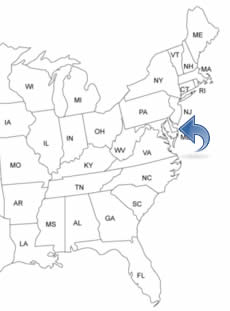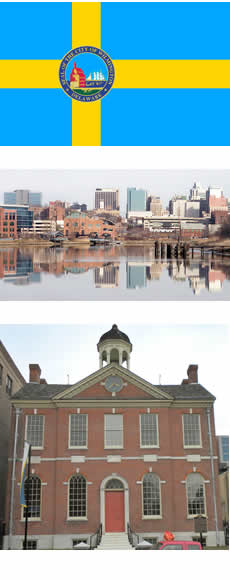DELAWARE PEOPLE SEARCH!
- ✔ Contact Info
- ✔ Phone Numbers
- ✔ Criminal Records
- ✔ Income Info
- ✔ Neighbors
- ✔ People's Age
- ✔ Property Ownership
- ✔ And Much More
Wilmington, Delaware
Wilmington is located at the confluence of the Christina River and the Delaware River and is the largest city in the U.S State of Delaware. Wilmington is often referred to as the corporate capital of the world. Over half of the Fortune 500 companies call Wilmington their corporate home.
To See And To Do In Wilmington
- Old Swedes Church
- Fort Christina
- Delaware Art Museum
- Delaware History Museum
- Annex Marketplace
History Of Wilmington - Timeline
Wilmington was colonized by settlers from Sweden in March 1638 and was called Willingtown. They established Fort Christina and the fort served as the headquarters for the colony of New Sweden. The colony ruled under Swedish law from 1643 to 1653. In 1651, Fort Casimir was built by the Dutch, a few miles south of Fort Christina.
In 1654, the Swedes captured Fort Casimir and renamed it, Fort Trinity. In 1655, Dutch forces retook the fort and they also took Fort Christina and Wilmington was now under the control of the Dutch. In 1682, the Lombardy Hall was built by Gunning Bedford, Jr. He was a lawyer and politician from Wilmington and a signer of the U. S. Constitution. In 1698, the Holy Trinity, Old Swedes Church, was built.
In 1731, the town was incorporated. In 1739, a lot of people from England lived in the region and the King of England changed the name from Willingtown to Wilmington. In 1742, Oliver Canby built a flour mill on Brandywine River at Wilmington, and that was the beginning of the large commercial flour milling industry in the town.
In 1761, James Adams sets up the first printing press in the town. In 1777, the town was occupied by the British. In 1785, the newspaper Delaware Gazette was founded. (Today's the News Journal). In 1787, the Gilpin Mills opened. It was the first paper mill in the state. In 1795, the Bank of Delaware was founded in Wilmington. It was the state's first bank.
In 1800, the Old Town Hall was completed. In 1803, the Eleutherian Mills was built. It was owned by the Du Pont family and was used for the manufacture of explosives. Wilmington officially became a city in 1832. In 1838, the railroad came.
In 1844, the steamship, The Bangor, was launched in in the city. It was America's first iron-hulled propeller steamship. The greatest growth in the city occurred during the Civil War. Wilmington supplied goods and materials including ships, railroad cars, gunpowder, shoes, and other war-related goods. In 1867, the Howard High School of Technology was built.
By 1868, Wilmington was producing more iron ships than the rest of the country combined and it rated first in the production of gunpowder. In 1868, the Grace United Methodist Church was built. In 1871, the Grand Opera House was built. In 1878, the city had telephones. In 1882, the city had electric street lights. In 1886, the Goldey-Beacom College was founded. In 1888, the city had electric streetcars.
In 1900, more than 76,500 people lived in the city. In 1923, the Wilmington Marine Terminal and the DuPont Building was completed. In 1938, the city celebrated the 300th anniversary of the landing of Swedes in Wilmington. In 1968, riots broke out in the city when Martin Luther King was assassinated. The National Guard occupied the city for 10-month. It is the longest occupation of an American city by state forces in the history.

